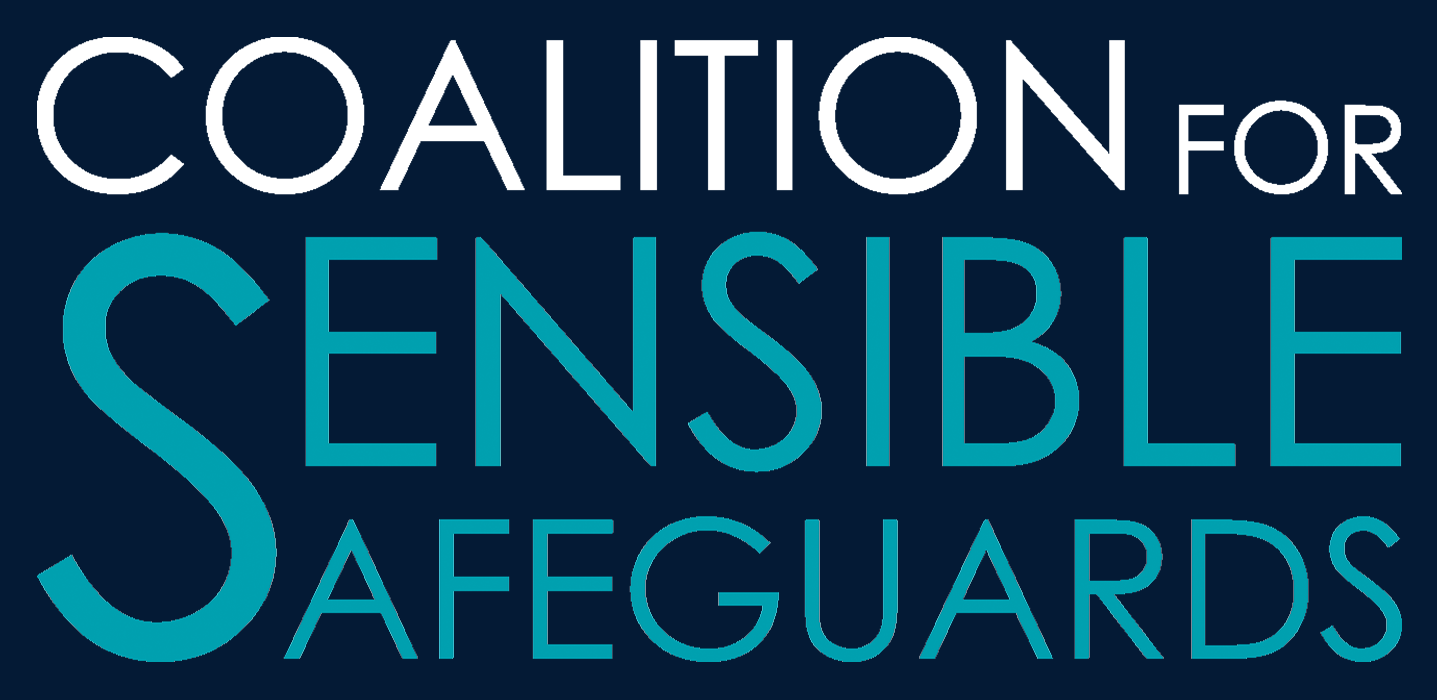Safeguarding Summer
A Report from the Coalition for Sensible Safeguards
May 2019 | Download PDF
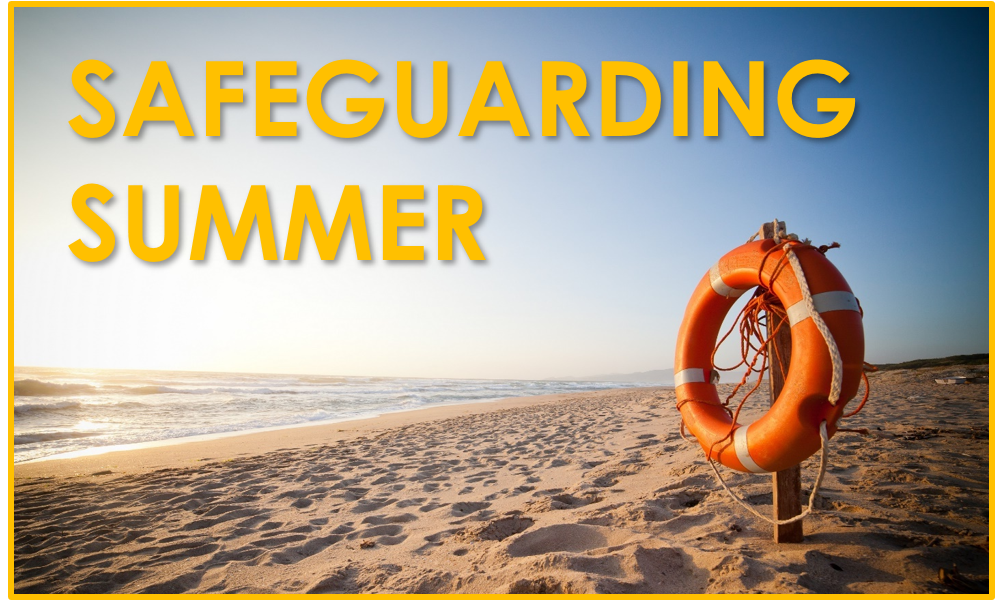
CONTRIBUTING ORGANIZATIONS
Center for Foodborne Illness Research & Prevention
Center for Progressive Reform
Center for Science in the Public Interest
Consumer Federation of America
Economic Policy Institute
Environmental Working Group
Food & Water Watch
KidsAndCars.org
New America’s Open Technology Institute
Public Citizen
Revolving Door Project at the Center for Economic and Policy Research
Edited by David Rosen
Introduction: Summer Is at Risk Without Strong Safeguards
 Summer is supposed to be when we take time off work to spend with family and friends, enjoy picnics and barbeques, lay out by the pool or on the beach, take road trips across the country or fly to far-flung places.
Summer is supposed to be when we take time off work to spend with family and friends, enjoy picnics and barbeques, lay out by the pool or on the beach, take road trips across the country or fly to far-flung places.
But what happens if you’ve been deprived of the wages needed to take time off or travel, if road trips, flights and tour boats are potentially dangerous, if it’s way too hot to work or play outside, and if there’s a good chance the food and water may be hazardous to your health?
Suddenly, summertime looks less like a dreamy vacation and more like a scorching hot nightmare – a terrifying time of year that’s going to do lasting damage to your bank account, your health and, tragically, might even claim the life of a family member.
It would be the end of summer as we know it.
This frightening version of summer is much closer to reality than you might think – and far closer than it ever should be.
Big polluters are exacerbating climate change – raising temperatures to levels that make it hazardous to be outside, while fueling blooms of toxic algae that poison the water we might otherwise swim in, fish in and drink.
Employers aren’t paying workers the full wages they deserve, while travel booking sites are charging higher prices.
Planes, duck boats and cars have significant and as-yet unaddressed safety problems that make tourism and travel dangerous.
Food safety standards that keep summer grilling season safe are being rolled back.
Sunscreens still lack adequate safety and effectiveness standards.
Even first responders who are tasked with putting out massive wildfires that blaze during the summer months are being put at even greater risk by greedy corporations that are slowing down their internet service and preventing them from communicating with each other.
This isn’t how summer is supposed to be. It’s supposed to be a carefree time to relax, not an unregulated death trap.
Commonsense public protections – regulations – are essential to keeping summer safe, healthy, affordable and fun. In fact, summer can’t be any of those things without basic safeguards.
This report, assembled by leading members of the Coalition for Sensible Safeguards, covers just a few of the regulatory standards that are crucial to protecting everyone’s favorite time of the year.
Far from an exhaustive list, it’s a snapshot of the dangers posed by unchecked corporate greed and a call for stronger regulatory protections to ensure summertime is what it ought to be.
That these high standards aren’t already in place is the result of a decades-long war on public protections that has escalated in recent years – led by regulated industries and their deep-pocketed astroturf organizations, the Trump administration and conservatives in Congress.
This war on regulation has an extremely high cost – one borne by workers, families, businesses and local communities across the country. When sensible safeguards are blocked, delayed or repealed, all of us pay the price.
Stronger safeguards would help keep summer safe.
Airplane Safety Belongs in the Hands of the FAA, Not the Airlines
 Summary. When summer rolls around, families all across the country fly to far-flung places for relaxing vacations. People assume that airplanes are safe. But recent events have rocked that assumption to its core. Two tragic plane crashes exposed the failure of the Federal Aviation Administration (FAA) to properly oversee and ensure airline safety. The public was shocked to learn that the FAA relies almost entirely on plane manufacturers to assess the safety of their own planes – which most people assumed was the FAA’s job. As we keep learning time and again, industries cannot be trusted to police themselves.
Summary. When summer rolls around, families all across the country fly to far-flung places for relaxing vacations. People assume that airplanes are safe. But recent events have rocked that assumption to its core. Two tragic plane crashes exposed the failure of the Federal Aviation Administration (FAA) to properly oversee and ensure airline safety. The public was shocked to learn that the FAA relies almost entirely on plane manufacturers to assess the safety of their own planes – which most people assumed was the FAA’s job. As we keep learning time and again, industries cannot be trusted to police themselves.
Background. In late 2018 and early 2019, 346 lives were lost in two airplane crashes that were linked to faulty software that Boeing installed on its 737 MAX aircraft. Nadia Milleron lost her 24-year-old daughter on one of the flights. “Why did our daughter fall out of the sky?” Milleron asked. “We want to know. We want to know all the facts, all the details. Why did that happen? Why did it happen twice?”
Multiple investigations are underway to determine if Boeing had any knowledge of risks associated with the software and whether Boeing properly certified the safety of its 737 MAX airplanes.
The bigger problem is the FAA’s reliance on Boeing to conduct its own safety certifications. After Congress directed the agency to do so in 2004, the FAA delegated responsibility for deciding whether Boeing’s airplanes are safe to Boeing itself. According to a 2013 GAO report, 90% of the work involved in safety certifications was carried out by private sector personnel. This has created an unacceptable conflict of interest and gives airplane manufacturers a strong incentive to certify planes as safe, even when doubts remain.
The FAA needs to take back authority for airplane safety inspections.
Opponents. Neither the airline industry nor the current leadership of the FAA has called for a more independent safety certification process where the FAA is in the lead. However, there are calls within Congress to scrutinize and reform the safety certification process for new airplanes. The results of the ongoing investigations likely will lead to more calls for reform.
For More Information. Please contact Amit Narang, regulatory policy advocate for Public Citizen’s Congress Watch division, at anarang@citizen.org or (202) 454-5116.
More Competition Is Needed in the Online Travel Agency Market
 Summary. It seems like the options for booking this summer’s vacation abound; you can turn to Orbitz, Travelocity, Hotwire, or Booking.com, to name but a few. However, the vast majority of online travel agencies (OTAs) are owned by just two companies: Expedia Group and Priceline. Thanks to a narrow interpretation of antitrust law and lax enforcement by the Federal Trade Commission (FTC) and the U.S. Department of Justice (DOJ), these two companies now control 95 percent of the OTA market. Less competition means fewer choices and higher prices for you on that next vacation.
Summary. It seems like the options for booking this summer’s vacation abound; you can turn to Orbitz, Travelocity, Hotwire, or Booking.com, to name but a few. However, the vast majority of online travel agencies (OTAs) are owned by just two companies: Expedia Group and Priceline. Thanks to a narrow interpretation of antitrust law and lax enforcement by the Federal Trade Commission (FTC) and the U.S. Department of Justice (DOJ), these two companies now control 95 percent of the OTA market. Less competition means fewer choices and higher prices for you on that next vacation.
Background. Not long ago, preventing excessive market consolidation was viewed as an essential step towards safeguarding our political and economic freedoms. The Reagan administration, however, rejected this broad definition of anti-monopoly’s goals in favor of an approach that focused solely on price. Since that time, no president has meaningfully challenged this approach, resulting in a precipitous drop in antitrust enforcement and a remarkable rate of consolidation, including in the travel booking industry.
It turns out, however, that the assumptions underlying this hands-off approach to antitrust enforcement have been largely disproved. Countless scholars have found that consolidation often fails to lower prices, while it simultaneously limits quality, choice and innovation; exerts downward pressure on wages; and contributes to income and wealth concentration that hurts our democracy.
When you sit down to book that vacation this summer and it feels as though your hard-earned dollars are simply not going as far as they used to, you can at least partially thank lax enforcement by the FTC and the DOJ. They have done little to stop the rapid consolidation in the OTA market – or, for that matter, in the airline and hotel industries. The result is higher prices and limited choices for consumers like you.
Opponents. Corporations looking to consolidate have tipped the scales even further in their favor by exploiting the revolving door between government and the private sector. For example, companies frequently hire former employees of the FTC and the DOJ to defend their mergers, relying on their insider knowledge of the process. Even more consequentially, former attorneys on behalf of these mergers are frequently nominated to seats on the FTC’s board, a perch from which they may influence the direction and vigor of enforcement over the long-term.
For More Information. Please contact Eleanor Eagan, research assistant at the Revolving Door Project at the Center for Economic and Policy Research, at eagan@cepr.net or (202) 293-5380.
Rear Seat Belt Reminders Are Needed
 Summary. As summer begins and family road trips get underway, seat belt reminders for all seating positions are critically important. On average, vehicle crashes claim the lives of more than 100 people and injure at least 8,500 on our roadways every single day. Summer brings an increased risk for vehicle crashes, including alcohol-related crashes, and children are particularly at-risk. Far too many families have buried their loved ones unnecessarily because they weren’t buckled up.
Summary. As summer begins and family road trips get underway, seat belt reminders for all seating positions are critically important. On average, vehicle crashes claim the lives of more than 100 people and injure at least 8,500 on our roadways every single day. Summer brings an increased risk for vehicle crashes, including alcohol-related crashes, and children are particularly at-risk. Far too many families have buried their loved ones unnecessarily because they weren’t buckled up.
Background. In the summer, teens are out of school, meaning more inexperienced drivers are on the road for longer periods of time. David Mills lost his 16-year-old daughter Kailee in a 2017 vehicle crash. Kailee and her friend were driving just one mile to a friend’s home when they crashed. Kailee was unbelted in the back seat, causing her to be ejected and killed. “There are no words to describe the unbearable loss our family continues to endure every day. The most painful part for us is knowing that if the vehicle Kailee was in would have reminded her to buckle up, my daughter would still be here today,” her father said.
A 2017 report from the National Highway Traffic Safety Administration (NHTSA) found that seat belts saved at least 14,668 lives in 2016, and at least 2,456 more lives would have been saved if all unrestrained passengers involved in fatal crashes had worn them. In addition, a 2017 report from the Insurance Institute for Highway Safety found that up to 28 percent of adults surveyed admitted not wearing their seat belt in the rear seat all the time – noting that unrestrained rear seat passengers were nearly eight times as likely to sustain a serious injuries in a crash as those wearing seat belts.
In August 2007, safety groups filed a petition with NHTSA about the need for rear seat belt reminders. By law, the agency is supposed to respond to a petition within 120 days, yet NHTSA never did. Then in 2012, Congress passed the Moving Ahead for Progress in the 21st Century Act (MAP-21), which required the U.S. Department of Transportation (DOT) to issue a final safety standard no later than October 2015 requiring a safety belt reminder system for all seating positions. KidsAndCars.org and The Center for Auto Safety filed suit in federal court in May 2018 to compel DOT to move forward, but the agency hasn’t even started working on a rule. Meanwhile, thousands of vehicle occupants continue to be injured or killed every day, week, month and year this effective solution is delayed.
Opponents. Despite nearly universal support from public safety advocates and industry, DOT claims it is its prerogative to issue regulations based on its own priorities and agenda and continues to delay work on a rear seat belt reminder rule.
For More Information. Please contact Janette Fennell, president and founder of KidsAndCars.org, at Janette@KidsAndCars.org or (484) 278-4641.
Hot Cars Are a Danger to Children and Animals
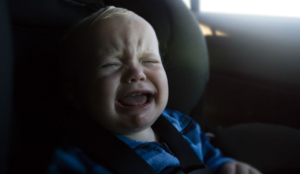 Summary. On average, 38 children die in hot cars in the U.S. every year, most of whom are under the age of three. More than half are left in the vehicle by a loving, responsible parent or caregiver. A vehicle acts like a greenhouse, heating up very quickly. High summer temperatures combine with the angle of the sun to increase the risk of hot car deaths. We need new legislation and regulation to put a stop to these easily preventable tragedies.
Summary. On average, 38 children die in hot cars in the U.S. every year, most of whom are under the age of three. More than half are left in the vehicle by a loving, responsible parent or caregiver. A vehicle acts like a greenhouse, heating up very quickly. High summer temperatures combine with the angle of the sun to increase the risk of hot car deaths. We need new legislation and regulation to put a stop to these easily preventable tragedies.
Background. As we move into summer, hot car fatalities are certain to rise. June, July and August are the deadliest months of the year for hot car tragedies. Changes in routine, sleep deprivation, fatigue, stress, distractions and habitual behavior are common factors that can lead parents to unwittingly leave a child behind. David Diamond Ph.D., is a memory expert who has studied the science behind this phenomenon for more than a decade. He concluded, “You cannot train your brain not to forget.”
Consider what happened to Miles Harrison, a loving and responsible father who lost his 21-month-old son Chase to heatstroke after leaving him in the back seat of his car and going to work all day. Harrison traveled across the world to adopt his son and would have done anything to protect him. “Technology exists to prevent families from suffering the unbearable pain my family feels every day. If my car had a system to detect Chase, we would be celebrating his 11th birthday this year,” Harrison said.
Although public education and awareness are at an all-time high, so is the number of children dying in hot cars. In 2018, at least 52 children died in hot cars, making it the worst year in U.S. history. More education and public awareness are not enough. We need sensible technological solutions. Systems designed to prevent hot car deaths can detect motion, carbon dioxide, temperature, weight, vital signs, door sequencing and more.
The Hot Cars Act of 2019 could prevent hot car tragedies involving children, animals and vulnerable adults. The legislation would ask the National Highway Traffic Safety Administration (NHTSA) to require automakers to include a system in all passenger vehicles that could sense the presence of a child or animal inside and warn the driver.
Opponents. For the past decade, the Alliance of Automobile Manufacturers representing the auto industry has opposed versions of the Hot Cars Act that would install driver reminder systems in vehicles. The auto industry claims it would take too long to take effect, and that new parents can’t afford cars with the needed technology. But the industry has a long history of claiming the sky is falling every time new safety standards are proposed and implemented.
For More Information. Please contact Amber Rollins, director of KidsAndCars.org, at Amber@KidsAndCars.org or (913) 732-2792.
Deadly Duck Boats Need Design Improvements and Safety Standards
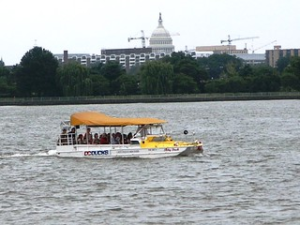 Summary. Amphibious vehicles known as duck boats, often repurposed WWII-era troop transports, have operated for decades with little attention to their safety deficiencies. A popular summertime attraction all around the nation, their unusual design exposes passengers to a high risk of deadly accidents on the road and on the water. Federal and state regulators have not meaningfully addressed deep-seated safety issues ingrained in the design of these more than two-ton, aging, military-grade vessels.
Summary. Amphibious vehicles known as duck boats, often repurposed WWII-era troop transports, have operated for decades with little attention to their safety deficiencies. A popular summertime attraction all around the nation, their unusual design exposes passengers to a high risk of deadly accidents on the road and on the water. Federal and state regulators have not meaningfully addressed deep-seated safety issues ingrained in the design of these more than two-ton, aging, military-grade vessels.
Background. Since 1999, at least 40 people have died in duck boat accidents. In July 2018, a duck boat carrying 31 passengers capsized during a thunderstorm at a popular resort lake in Branson, Missouri and 17 people died. Survivor Tia Coleman, who lost nine family members, described her home as “haunted by silence” in the aftermath. Across the country, duck boats have been involved in a wide array of fatal accidents: sinking, vessel collision and traffic accidents involving other vehicles and pedestrians.
Misleadingly, duck boats seem heavily regulated. The vehicles are subject to regulation by the National Highway Traffic Safety Administration (NHTSA), the U.S. Coast Guard and state and local authorities. But the multiple oversight regimes paper over the vessel’s inherent dangers, substituting perfunctory inspections for serious analysis and oversight of fundamental design flaws. The Coast Guard performs inspections and requires duck boats to carry life vests but avoids larger design and stability issues. NHTSA’s road safety standards apply to duck boats, but enforcement typically falls to state and local authorities. NHTSA also has not addressed glaring design issues, especially the abnormally large blind spots.
Federal regulators have known about duck boats’ safety defects since 2002, when the National Transportation Safety Board issued safety recommendations after a duck boat sank in Arkansas, killing 13. The agency does not have the power to regulate, but it argued duck boats should be reengineered to include watertight compartments, built-in floatation and high-capacity bilge pumps, and exclude canopies that trap passengers when a vessel sinks.
Opponents. Duck boat manufacturers and operators oppose stringent safety rules that limit their ability to make a profit. Discouragingly, there’s been little need for them to actively oppose federal action on the issue, as there have been no real signs of action from the Coast Guard or NHTSA. Legislation in the U.S. Senate to require more stringent regulation of the vessels has not gained substantial support.
For More Information. Please contact Matt Kent, regulatory policy associate for Public Citizen’s Congress Watch division, at mkent@citizen.org or (202) 454-5119.
Clean Water Rules Are Needed to Fight Toxic Algae Blooms
 Summary. Every summer, waterways throughout the U.S. experience toxic algae blooms that sicken people, prevent them from enjoying seasonal activities like fishing and swimming, threaten our drinking water and kill wildlife. To combat these algae blooms, we need to tighten and enforce our nation’s clean water rules and develop new policies that target unregulated pollution sources.
Summary. Every summer, waterways throughout the U.S. experience toxic algae blooms that sicken people, prevent them from enjoying seasonal activities like fishing and swimming, threaten our drinking water and kill wildlife. To combat these algae blooms, we need to tighten and enforce our nation’s clean water rules and develop new policies that target unregulated pollution sources.
Background. America’s rivers and streams are choked with excess nutrients from sewage treatment plants, coal plants, over-fertilized golf courses and lawns and manure generated by factory farms. When these pollutants enter our ponds, lakes, estuaries, bays and gulfs, they feed a swirl of life and death: blooms of algae that decompose, consume oxygen and suck the life out of everything from the tiniest stream to the mightiest seas.
As the residents of Toledo, Ohio, discovered in 2014 when their drinking water treatment plant had to be shuttered to prevent contamination, algae is not just gross – it’s dangerous. More than 400,000 people were without tap water, and local stores ran out of bottled water, sending residents scrambling to nearby towns and into Michigan. Restaurants, universities, and libraries were forced to close, impacting students and the local economy.
Hazardous algal blooms come in many varieties, and the impact can vary dramatically. In shellfish and marine mammals, the results can be fatal, and scientists are starting to learn more about other impacts, including severe neurotoxicity and neurodegenerative diseases. These discoveries are important because many of the same impacts are found in people exposed to toxic algae blooms during the summer months.
Though the Trump administration is in cheerleading mode when it comes to self-regulation, relying on corporations to do the right thing voluntarily is not enough. There are crucial clean water rules and agreements known as Total Maximum Daily Loads on the books at the local, state and federal levels designed to protect and restore iconic summer destinations ranging from the Chesapeake Bay to the Great Lakes, but more needs to be done. Strengthening these rules, closing existing loopholes, improving American Farm Bureau Federation programs, enforcing our clean water protections and pushing back against regulatory rollbacks are essential.
Opponents. Opponents of clean water protections designed to fight toxic algae blooms include the Trump administration (see the Clean Water Rule rollback as one example), the Farm Bureau, agribusiness companies and trade associations, and the fertilizer industry.
For More Information. Please contact Evan Isaacson, policy analyst at the Center for Progressive Reform, at eisaacson@progressivereform.org or (202) 747-0698, ext. 6.
Stronger Sunscreen Safety and Effectiveness Standards Are Needed
 Summary. Virtually everyone who goes to the beach or the pool, works in the yard or plays outdoors slathers on sunscreen. Many sunscreens offer inferior sun protection or contain potentially dangerous ingredients. They also can have misleadingly high SPF (sunburn protection factor) numbers, playing into the myth that a higher SPF rating offers greater protection from long term skin damage and potentially cancer. In addition, sunscreen sprays may pose an inhalation risk. Finally, despite scant evidence, the government still allows most sunscreens to claim they help prevent skin cancer.
Summary. Virtually everyone who goes to the beach or the pool, works in the yard or plays outdoors slathers on sunscreen. Many sunscreens offer inferior sun protection or contain potentially dangerous ingredients. They also can have misleadingly high SPF (sunburn protection factor) numbers, playing into the myth that a higher SPF rating offers greater protection from long term skin damage and potentially cancer. In addition, sunscreen sprays may pose an inhalation risk. Finally, despite scant evidence, the government still allows most sunscreens to claim they help prevent skin cancer.
Background. In 2011, the U.S. Food and Drug Administration (FDA) enacted the first rules requiring sunscreens advertising “broad spectrum” to pass a test verifying a reduction in ultraviolet A (UVA) rays, and nearly all sunscreens sold today include an ingredient that filters at least some UVA. However, the FDA set the bar too low, and most products pass the agency’s test without offering adequate UVA protection.
The FDA also set new rules that removed some of the most misleading claims from sunscreen labels, such as “waterproof” and “sweatproof.” But the agency allowed most sunscreens to continue claiming that they play a role in preventing skin cancer, even though there is little scientific evidence to suggest that sunscreen alone reduces the risk, particularly for melanoma. And despite concerns raised for years, many sunscreens still contain oxybenzone, a potential hormone disruptor that may also cause coral bleaching and even coral death, or retinyl palmitate, a form of vitamin A that may speed the development of skin tumors.
In 2014, President Barack Obama signed the Sunscreen Innovation Act, a law to speed the review of new ingredients, and the FDA has requested more data from sunscreen companies, but to date no new ingredients have been approved. In February 2019, the FDA finally proposed updated sunscreen regulations to improve safety and efficacy – including assessments of absorbance and toxicity as well as tighter standards for UVA protection. Based on existing test data, the agency’s proposal recognizes just two ingredients as safe and effective – zinc oxide and titanium dioxide – while 12 other ingredients, including oxybenzone, need more testing. The agency also proposed new labeling requirements and a cap on high SPF claims at 60-plus. But the rules are a long way from being finalized.
Opponents. The sunscreen industry includes large manufacturers that have a lot of political clout. In addition, trade associations that represent the personal care and health product industries have fought proposals for the phasing out of oxybenzone in sunscreens.
For More Information. Please contact Colin O’Neil, legislative director at Environmental Working Group, at colin@ewg.org or (202) 939-9157.
Pork Inspection and Safety Standards Are at Risk
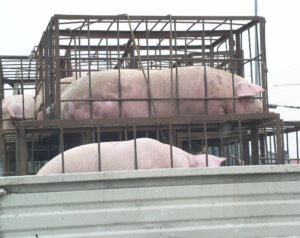
Background. USDA’s new rule would expand a pilot program that federal oversight authorities criticized for failing to ensure food safety. The rule would shift responsibility for work currently performed by government inspectors – including identifying diseases in live pigs and spotting fecal contamination on carcasses – to slaughterhouse employees who may not be qualified for this role. Shockingly, the rule contains no requirements that employees receive training to perform these tasks. Eventually, the rule would result in a 40% reduction in the number of government inspectors at hog slaughterhouses.
In addition, the rule would lift line speed restrictions at hog slaughter plants. In fact, it would allow plants to run as fast as they can so long as they “maintain process control,” and it would invite the companies themselves to define that criteria. As 60 members of Congress told USDA in 2016, “increased off-line inspections would not compensate for inadequate training of sorters, higher line speeds and government inspectors’ reduced inability to see potential defects and to enforce standards.”
Consumer groups oppose this rule because it likely would make food less safe to eat and increase worker injuries.
Supporters. Increased “efficiency” resulting from this rule is worth more than $47 million a year to the pork industry. Industry lobbyists, like the National Pork Producers Council, claim that the experience of the five pilot plants operating under the new, lower standards proves that food safety and worker and animal welfare concerns are overblown.
For More Information. Please contact Thomas Gremillion, director of food policy for Consumer Federation of America, at tgremillion@consumerfed.org or (202) 939-1010; Tony Corbo, senior lobbyist for Food & Water Watch at tcorbo@fwwatch.org or (202) 683-2449; Sarah Sorscher, deputy director of regulatory affairs for the Center for Science in the Public Interest at ssorscher@cspinet.org or (202) 777-8397; or Patricia Buck, executive director for the Center for Foodborne Illness Research & Prevention at buck@foodborneillness.org or (724) 458-0767.
First Responders Need Net Neutrality Protections

Background. Net neutrality is overwhelmingly popular with voters of all stripes, as well as businesses large and small. After years of failed attempts, in 2015, the FCC enacted the Open Internet Order, the strongest net neutrality rules in the nation’s history. It established nondiscriminatory “rules of the road” for online traffic and prevented broadband providers from blocking, throttling or prioritizing traffic for the highest bidders.
But in 2017, President Donald Trump’s newly appointed FCC Chairman, Ajit Pai, launched a proceeding to repeal the net neutrality protections. More than 20 million Americans flooded the agency with comments, calls and pleas to preserve the rules, but the Trump administration repealed the rules as of June 2018 and revoked the FCC’s legal jurisdiction to oversee broadband providers like AT&T and Comcast.
Two months later, firefighters responding to the largest wildfire in California’s history discovered that the devices they used to coordinate with each other were barely working. Verizon was throttling, or slowing, the fire department’s internet connection because they had exceeded their so-called “unlimited” data plan. The Open Internet Order was designed to prevent this sort of incident, but without it, the FCC’s hands were tied. The fire department was forced to plea for help in the media to get Verizon to fix the problem.
As we head into another wildfire and hurricane season, Congress is trying to help with the Save the Internet Act. This bill would reinstate the 2015 Open Internet Order and restore the FCC’s ability to intervene when broadband providers fail our nation’s first responders.
Opponents. The opposition to net neutrality is largely confined to three politically powerful companies: AT&T, Comcast and Verizon. These companies and their trade associations have repeatedly sued the FCC to prevent net neutrality rules. They invest heavily in lobbying and campaign contributions to block or stall pro-net neutrality legislation in Congress.
For More Information. Please contact Joshua Stager, senior counsel at New America’s Open Technology Institute, at stager@opentechinstitute.org or (202) 986-2700.
Workers Need Protection from Deadly Heat

Background. Heat is the leading weather-related killer in the U.S., and climate change is bringing more hot days. As record-breaking summer temperatures become the norm – 18 of the past 19 years were the hottest on record – workers and other vulnerable populations are at increased risk. Public Citizen reported that through the week of July 4, 2018, more than 2.2 million construction and farmworkers labored in extreme heat each day. During last year’s national campaign launch for heat protections, Raudel Felix Garcia, who lost his brother to heat, shared: “A decade after my brother’s death, workers continue losing their lives from heat illness. I don’t want any more families to go through the pain that my family went through. I am here to demand safe working conditions for the ones who lift up this country with all the hard work they do laboring under a fireball in the sky.”
Excessive heat exposure can result in heat exhaustion, leading to nausea, headaches and dehydration. If not treated promptly, heat exhaustion can progress rapidly to heat stroke and even death. Heat also exacerbates other health problems like asthma and heart disease. The solutions to prevent heat stress are commonsense, starting with access to water, rest, shade or a climate-controlled environment, and acclimatization. Most employers do not implement these protections voluntarily. That’s why a federal rule is needed.
Despite recommendations by the National Institute for Occupational Safety and Health and an OSHA advisory board, the agency has not adopted a standard. The U.S. military and three states – California, Washington and Minnesota – have issued standards or guidance. OSHA’s inaction has prompted bicameral congressional support for a heat stress standard.
Opponents. The California Chamber of Commerce has led the opposition to the state’s heat protections. It has argued that the rules are overbroad and costly. But studies have warned that in the absence of preventive measures, excessive heat causes an increase in workers compensation and hospital costs, and a dramatic loss in labor capacity and productivity.
For More Information. Please contact Shanna Devine, worker health and safety advocate for Public Citizen’s Congress Watch division, at sdevine@citizen.org or (202) 454-5168, or David Arkush, managing director of Public Citizen’s Climate Program, at darkush@citizen.org or (202) 454-5132.
Working Families Need Overtime Pay Protections
Summary. The 40-hour work week is a central tenet of our labor law, and its premise is simple: Working people need time with their families – and if they must work longer hours, they should be compensated for it. Overtime protections are crucial for parents during summer months, when children are out of school and childcare is expensive. But in March, the U.S. Department of Labor proposed an overtime salary threshold – the threshold under which most salaried workers are automatically eligible for overtime protections – of roughly $35,000 a year. This proposal leaves behind millions of workers who would have received overtime pay under a much higher threshold set in 2016 that the Trump administration abandoned. This is a gut punch to these workers and their families.
Background. Federal law requires people working more than 40 hours a week to be paid at 1.5 times their normal pay rate for the extra hours, but the law exempts salaried workers who make above a certain salary threshold and are deemed to have “executive, administrative, or professional” duties. The salary threshold is supposed to help protect supervisors with little bargaining power and low earnings – for example, low-paid front-line supervisors at fast-food restaurants – from being forced to work unpaid overtime. But the overtime pay threshold has eroded so dramatically that people who take home as little as $455 per week (less than $24,000 per year) can be forced to work 50, 60 or 80 hours a week without getting the extra pay.
A stronger overtime rule would help repair this hole in our labor laws by properly valuing one of workers’ most precious resources: time. Under a higher overtime threshold, some workers would continue to work long hours but would be compensated fairly – working overtime would become a way of earning extra money for a summer family vacation. Others would see their formerly unpaid overtime hours reduced and get their nights and weekends back, along with the opportunity to spend more summer time with family and friends.
Opponents. The higher 2016 overtime threshold was held up in court following a challenge by business trade associations and Republican-led states. Then, bowing to corporate interests, the Trump administration proposed a much lower threshold – claiming that anyone making more than $35,000 a year is a well-paid executive who doesn’t need or deserve overtime protections. This rollback was a profound betrayal of his campaign promise to stand up for working people.
For More Information. Please contact Heidi Shierholz, policy director at the Economic Policy Institute, at hshierholz@epi.org or (202) 533-2560.
About Us
The Coalition for Sensible Safeguards (CSS) is an alliance of more than 160 labor, scientific, research, good government, faith, community, women’s, public health, consumer, civil rights, environmental and public interest groups representing millions of Americans committed to defending and advancing our system of public protections. We are joined in the belief that our nation’s system of regulatory safeguards should secure our quality of life, pave the way for a sound economy and benefit us all.
The coalition is co-chaired by Public Citizen and Consumer Federation of America – and is led by an executive committee that includes the AFL-CIO, the Center for Progressive Reform, the Economic Policy Institute, the Natural Resources Defense Council and the Union of Concerned Scientists.
To subscribe to the coalition’s daily regulatory clips, please contact any of the individuals listed below.
Visit us online at SensibleSafeguards.org and follow us @goodregs.
Acknowledgements
This report was authored by the individuals listed on each page and edited by David Rosen. The editor wishes to thank each of the contributors as well as Omer Atas, Angela Bradbery, Don Owens, Mike Stankiewicz and Zach Stone for their assistance with editing, production and social media. The editor also wishes to thank members of the CSS executive committee for supporting this report.
Press Contacts
David Rosen, drosen@citizen.org, (202) 588-7742
Angela Bradbery, abradbery@citizen.org, (202) 588-7741
Don Owens, dowens@citizen.org, (202) 588-7767
###
